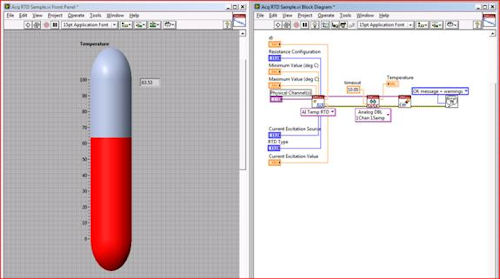Check it Out: How-To Guide for Most Common Measurements
December 4, 2001
By Anthony J. Lockwood
Dear Desktop Engineering Reader:
 “Sometimes a Great Notion” is not only the title of Ken Kesey’s second novel, it could be my subtitle. I sometimes get great notions in my head and, because I have endless depths of experience, I dive right in heedless of the wisdom available in millennia of acquired human knowledge. Take the time I slaved over a batch of curried fresh pumpkin soup. It was so wretched flies fled it. During post-mortem, I looked up a recipe I knew by heart and realized that I had forgotten about necessities like stock and complementary spices. The lesson here is that you think you know all this stuff by heart. But the old adage applies: The more you know, the more you forget.
“Sometimes a Great Notion” is not only the title of Ken Kesey’s second novel, it could be my subtitle. I sometimes get great notions in my head and, because I have endless depths of experience, I dive right in heedless of the wisdom available in millennia of acquired human knowledge. Take the time I slaved over a batch of curried fresh pumpkin soup. It was so wretched flies fled it. During post-mortem, I looked up a recipe I knew by heart and realized that I had forgotten about necessities like stock and complementary spices. The lesson here is that you think you know all this stuff by heart. But the old adage applies: The more you know, the more you forget.
And in your job, you cannot afford to forget something by relying on your mind’s database. Lives as well as your livelihood may depend upon your getting it right. You need to refer to the libraries of information available to you to ensure that you nail it because memory will fail you. That, in a nutshell, is why you’ll want to bookmark the web page that lies at the other end of today’s Check It Out link over there.
The “How-To Guide for Most Common Measurements” from National Instruments is a centralized, online resource packed with information about how to make common sensor and signal measurements. We’re talking about sensing devices that handle current strain, voltage, pressure and load frequency, and sound and vibration as well as all sorts of temperature devices like thermocouples and thermistors.
The landing page you’ll arrive at is really a portal with links to 10 different sensor types. Each link takes you to an in-depth document on that sensor. All discussions follow a similar form: They begin with an overview of the device’s operating principles then proceed to lead you through the basic steps to take a measurement with that device. Where applicable, discussions are illustrated with explanatory figures, key equations, and the like. Nothing is taken for granted.
Document is not quite the right word to describe the presentations. They are really refreshers on the fundamentals of using a particular class of device augmented with a couple of shots of steroids. See, each discussion ends with a bunch of links to supplementary educational data such as webcasts and white papers. So, they provide the basic information you need to make informed choices that get you back to work quickly. But then they make available the higher-order details should you need it.
As an example, take the section on encoders. Here’s its table of contents: Encoder and Applications Overview; How to Make an Encoder Measurement; Connecting an Encoder to an Instrument; Recommended Hardware and Software; and Encoder Webcasts, Tutorials, and Other How-To Resources. Naturally with this being a corporate site, links to NI products are recommended. But this is not a heavy-handed sales job. Rather, the data are marketing neutral.
“How-To Guide for Most Common Measurements” is very well done. It is a valuable resource that you’re likely to refer to again and again. Just remember to bookmark it so that you don’t have to try and recall where it resides when you need it next.Thanks, Pal. – Lockwood
Anthony J. Lockwood
Editor at Large, Desktop Engineering
Subscribe to our FREE magazine, FREE email newsletters or both!
About the Author
Anthony J. Lockwood is Digital Engineering’s founding editor. He is now retired. Contact him via [email protected].
Follow DE





